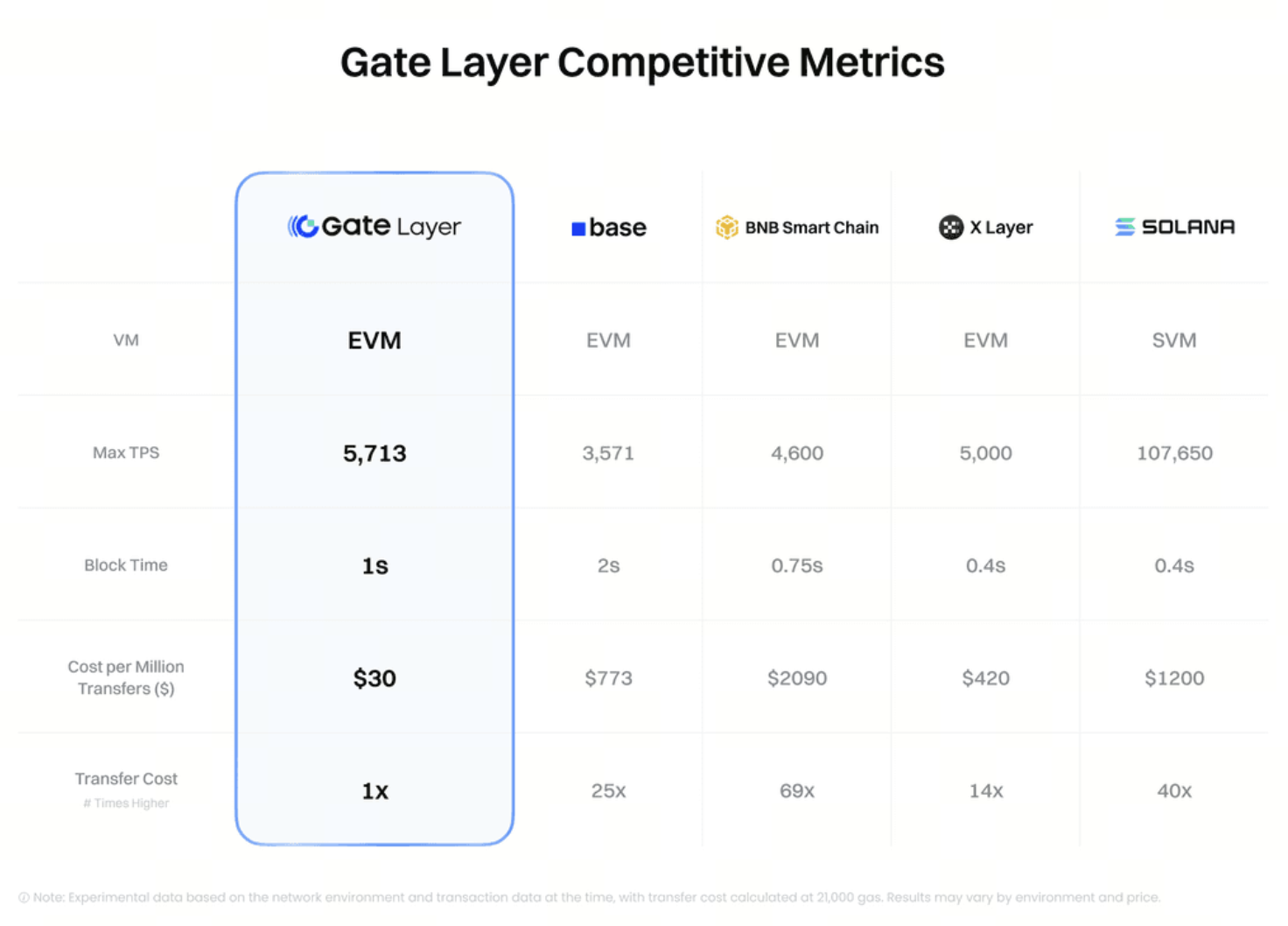Gate Layer and GT Upgrade Unlocking a New Era of Efficient and Low Cost Web3
A New Phase in Web3 Infrastructure
Blockchain technology is steadily moving toward mass adoption. Gate has officially launched Gate Layer, a high-performance Layer 2 network, and simultaneously optimized the GT tokenomics and ecosystem applications. These initiatives not only boost system performance but also reinforce GT’s role as the core asset of the ecosystem, ensuring greater stability, security, and efficiency for both users and developers.
Gate Layer: The Next-Generation Layer 2 Solution
Gate Layer is built on the OP Stack, using Gate Chain as the settlement layer, and provides full compatibility with the EVM. Developers can seamlessly migrate existing DApps, reducing development costs and accelerating market entry in Web3.
Key Features
- Full EVM Compatibility: Supports Ethereum tools and applications.
- Dual Security: Gate Chain mainnet settlement combined with GT staking enhances network security.
- High Performance: Supports up to 5,700 TPS and maintains an average block time of 1 second.
- Ultra-Low Costs: Transaction fees are significantly lower than those of other major Layer 2 solutions.
- Cross-Chain Interoperability: Integration with LayerZero enables asset transfers across ETH, BSC, Polygon, and other chains.
Outstanding Cost Advantage
Processing 1 million transactions on Gate Layer costs only about $30, compared to approximately $700, $2,000, and $1,000 on Base, BSC, and Solana, respectively—highlighting a significant cost advantage.

Ecosystem Expansion Across Multiple Use Cases
Gate Layer is more than a high-performance Layer 2; it is a comprehensive platform for application deployment. Planned releases include:
- Perp: A decentralized perpetual contract platform that provides high liquidity and an uninterrupted trading experience.
- Gate Fun: A no-code token issuance tool that enables teams to rapidly launch projects.
- Meme Go: A cross-chain meme coin trading and tracking platform with support for ETH, BSC, Solana, and additional chains.
GT: Enhanced Functions and Value
With the launch of Gate Layer, GT’s role in the ecosystem is elevated:
1. Gas Token Role: All on-chain actions—including smart contracts, NFTs, and cross-chain transactions—require the use of GT.
2. Dual Deflationary Mechanism:
- Scheduled Burns: As of Q2 2025, 180,555,112 GT has been burned, representing 60.18% of the total supply.
- On-Chain Burning: After EIP-1559 activation, the system automatically burns base transaction fees, thereby increasing scarcity.
Gate Chain Technology Upgrades
To meet growing application demands, Gate Chain has upgraded to consensus version v1.20, providing several key enhancements:
- Supports EIP-4844 blob transactions for improved data processing.
- EVM upgraded to the Cancun release, maintaining compatibility with Ethereum.
- Provides full support for 12 protocol upgrades, such as EIP-2565 and EIP-2929.
- Features an optimized RPC interface and support for new blob transactions, which improve developer usability and efficiency.
Conclusion
With the rollout of Gate Layer and the upgrade of GT tokenomics, Gate is not only driving technological innovation but also advancing the optimization of Web3 infrastructure. These measures reduce transaction costs and boost efficiency. They also enable more application scenarios, paving the way for a more open, inclusive, and sustainable Web3 future for both users and developers.
Related Articles

2025 BTC Price Prediction: BTC Trend Forecast Based on Technical and Macroeconomic Data

Pi Coin Transaction Guide: How to Transfer to Gate.com

Flare Crypto Explained: What Is Flare Network and Why It Matters in 2025

How to Use a Crypto Whale Tracker: Top Tool Recommendation for 2025 to Follow Whale Moves

What is N2: An AI-Driven Layer 2 Solution
